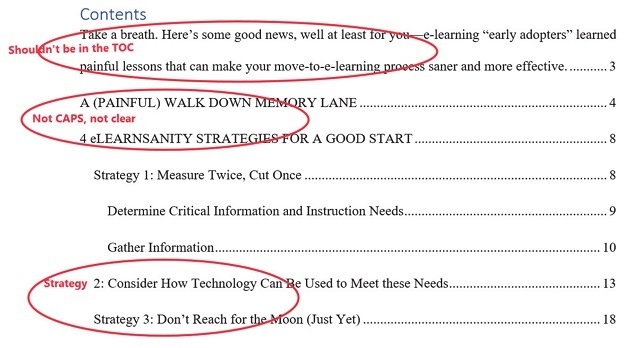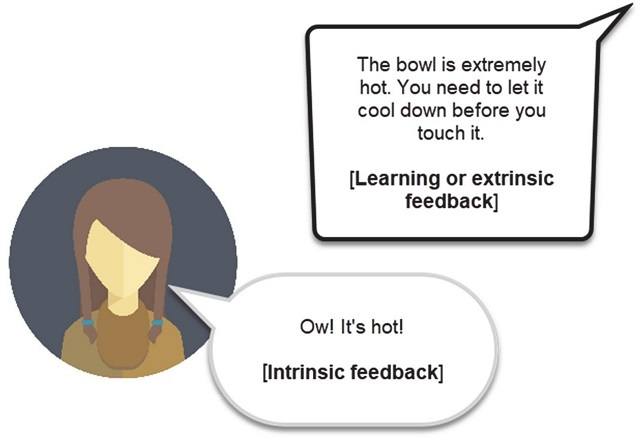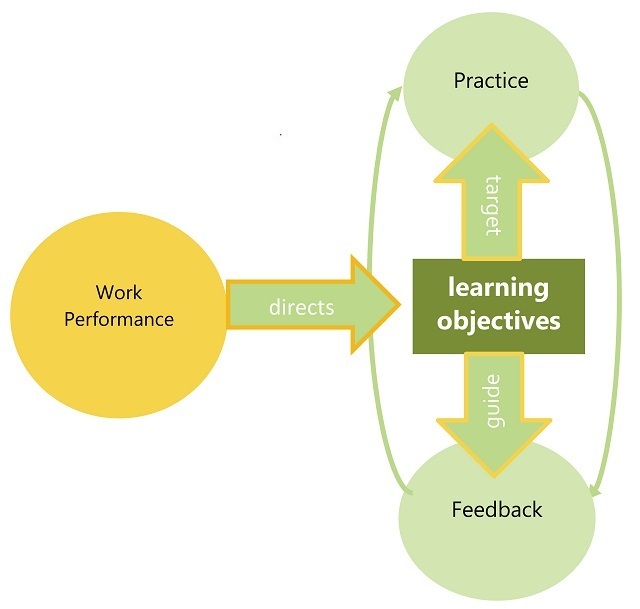Mastering Deeper Learning: Why Practice And Feedback?
Patti Shank, PhD, author of the Make It Learnable series, is allowing our readers to read portions of her new books. This article comes from Practice And Feedback For Deeper Learning.
The subject of my book is practice and feedback. Why did I put these two topics together? It’s because they go together like fish and chips, Batman and Robin, peanut butter and bananas (Elvis Presley reference), and snow and snowball fights.
Practice is where we apply what we are learning. It’s where people make it meaningful and take it from what to how. Realistic practice makes learning easier to remember and apply for the job. Think about something you learned and applied to something important to you. What lessons did you learn? (Lessons learned are feedback to yourself.)
Feedback supplies information about needed changes. Figure 3.1 shows feedback (mistakes I circled) from the table of contents (TOC) in Word for a chapter I wrote for someone else’s book.
Figure 3.1 Mistakes I circled in my Microsoft® Word table of contents (TOC)

All the things I circled are things I saw that I needed to fix.
Intrinsic Versus Extrinsic Feedback
The feedback from the TOC activity came from seeing what was wrong with the TOC, not from an instructor or another person.
Feedback can come from many sources. If we are in a training class, feedback often comes from peers and the facilitator. We consider what others say about our answers and performance extrinsic—or external—feedback. We also get extrinsic feedback when we do an online activity and the screen tells us our answer was incorrect—and why.
Intrinsic—or internal—feedback comes from within or from natural consequences, like burning your hand on a too-hot bowl of soup (or seeing what is wrong with your table of contents). Intrinsic feedback is also real-life feedback you get from a learning scenario that returns the consequences of your choice rather than “learning feedback” such as “That is an incorrect choice. You should have taken her keys away so she cannot drive while impaired”. I show an example of intrinsic versus extrinsic feedback in Figure 3.2.
Figure 3.2 Intrinsic versus extrinsic feedback

I encourage you to use realistic practice methods because they tend to be more easily remembered. This is true for feedback as well.
The Relationship Of Work Performance To Learning Objectives And Practice And Feedback
How can we decide what instructional practice we should create and what feedback we should use to evaluate it? When learning in organizations, desired work performance directs needed learning objectives. Learning objectives target needed practice and guide evaluation of the practice (feedback). Figure 3.3 shows this relationship visually:
Figure 3.3 The relationship of work performance to learning objectives, practice, and feedback

Consider how the process in Figure 3.3 might work with a lesson on using heading styles to build a table of contents (TOC) in Microsoft Word. During analysis, we discover the following document requirements for using a table of contents.
- Use of Microsoft Word Heading Styles.
- TOC is after the cover and before the introduction.
- No TOCs for documents under five pages.
- TOC can have up to three levels of headings (H1, H2, H3) but must have at least one level.
- H2 and H3 are used only when there are at least two in a section.
- Headings should use parallel construction when it makes sense to do so.
- Headings should be understandable to readers.
- TOC should not have missing headings.
- No non-headings should show up in the TOC.
- All headings should show up at the right level.
We use these requirements to create the learning objectives. The learning objectives target which practice activities are needed. I show two examples of making practice activities from learning objectives in Table 3.1.
Table 3.1 How learning objectives become practice activities
| This learning objective becomes —> | This practice activity |
| Create heading styles using Microsoft Word heading styles | Apply three levels of heading styles using Microsoft Word |
| Make sure headings are understandable to readers | Review each heading for clarity and make changes as needed |
If a learning objective doesn’t easily tell you what practice activity is needed, chances are the learning objective doesn’t describe specific work performance. The lesson objectives, practice activities, and feedback checklist might look like Figure 3.4.
Figure 3.4 Practice and feedback for lesson on creating a table of contents using Microsoft Word heading styles
Lesson: Create Company XYZ-Compliant Document Table of Contents
Learning objectives:
- Don’t use a TOC when…
- Create heading styles using Microsoft Word heading styles.
- Use parallel wording in your headings when possible.
- Make sure headings are understandable to readers.
- Add the table of contents to your document after the cover and before the introduction.
- Check for TOC problems:
- Missing headings.
- Headings aren’t parallel.
- Headings not written in reader-friendly language.
- No more than three levels of headings.
- When H2 and H3 are used: At least two used in the section?
- Non-headings show up in the TOC.
- Headings at wrong heading level.
Practice activities:
- Apply three levels of heading styles using Microsoft Word.
- Create a TOC in this document (simple).
- Create a TOC in this document (more complex).
- Find the errors in and fix the TOC in this document (more complex).
- Build your own document with TOC (more complex).
Feedback checklist:
Yes/No All answers should be yes Issue(s) Does the document have more than five pages? Is the TOC after the cover and before the introduction? Are all headings created using Heading styles? Are all needed headings there? Are all headings at the right level? Are all headings parallel? Are headings reader-friendly? Are there three or fewer levels of headings? Are there at least two headings in a section when H2 and H3 are used? Are all headings in the TOC actual headings?
Research on practice and feedback says that connecting the right kinds of practice with valuable feedback makes a significant difference in learning outcomes. In my two next articles, I’ll discuss what the research tells us about what makes some of the bigger differences in practice and feedback outcomes.
Stay tuned!








